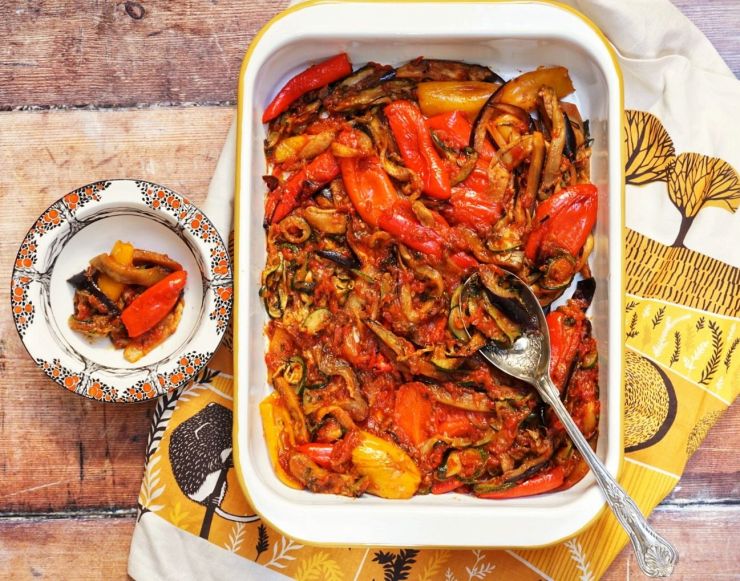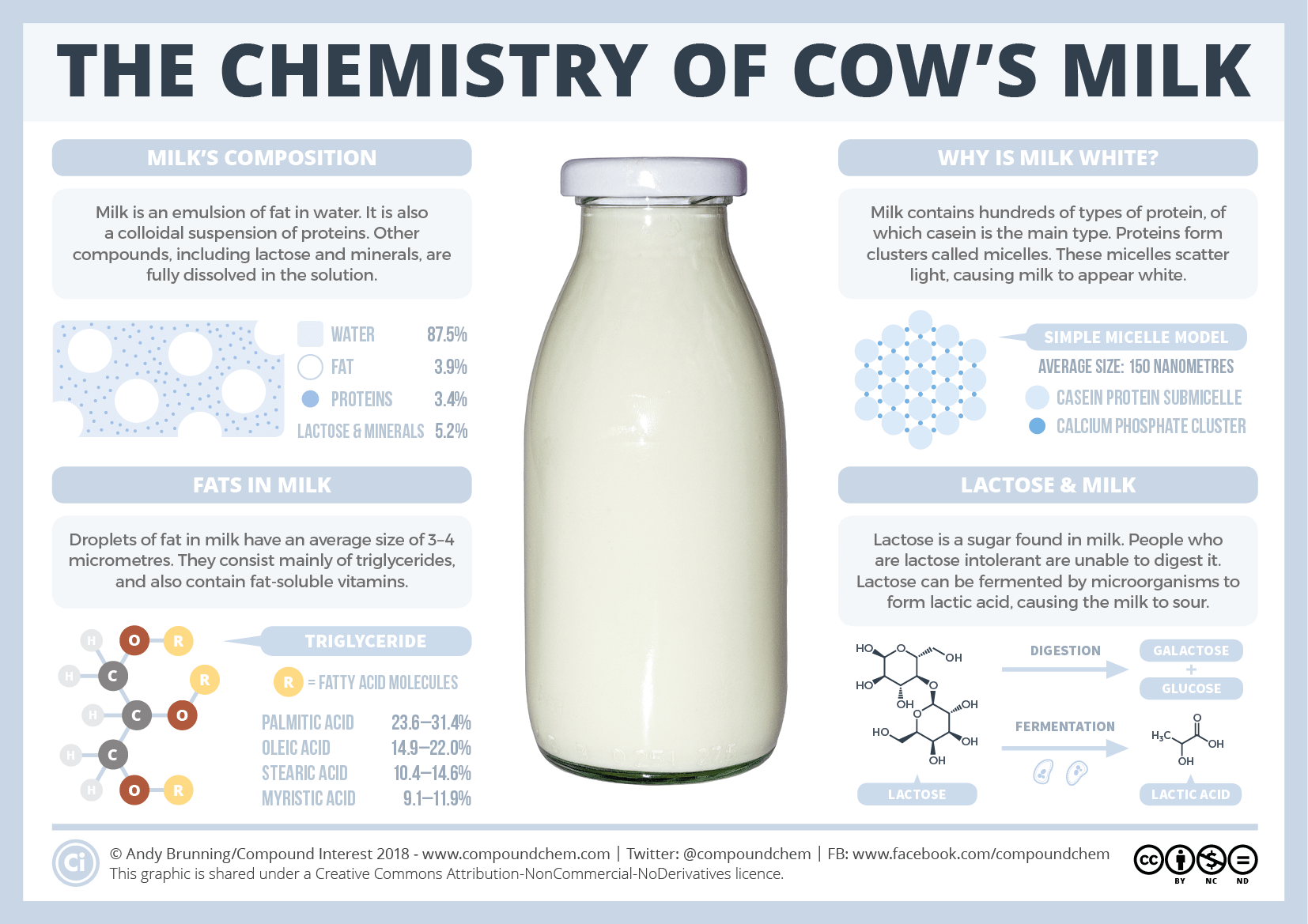
Ratatouille is a really healthy dish and the best way to make it is to roast each of the vegetables separately. This might appear to be a bit of a faff, but it does ensure that you can taste all the individual flavours in the dish. It is a dish for those days where you feel like pottering about in the kitchen and have time to prepare a meal. I find cooking relaxing and I enjoy it – but it is also worth mentioning that some people don’t enjoy it at all and find meal preparation a chore, there is tinned ratatouille available but most will contain onion which is a fructan’s, so if you can tolerate fructan’s by all means have the tinned variety instead. (I don’t have an issue with tinned vegetables – they are perfectly acceptable and contain good sources of nutrition.)
The above infographic from Compound Interest https://www.compoundchem.com/ shows the colours of peppers and how this develops with ripening. Yellow and red peppers are the sweetest so are best for this recipe. Note that I have not removed any of the skins from the roasted pepper – this is what I would call a faff and why would you want to remove a source of fibre from the dish? The Mediterranean diet is good for health and this classic French provencale dish is a Mediterranean stew that ticks all the boxes.
Ingredients
- 1 courgette
- 1 aubergine
- 2 packs of mini sweet peppers or 300g yellow or red bell peppers
- 1 tin tomatoes
- 1/4 teaspoon of asafoetida
- 3 tablespoons oil
- 1 tablespoon dried oregano
- a few springs of fresh thyme (or a tablespoon on dried)
- 1 teaspoon of sugar
- Salt
Method
- Wash the vegetables and chop
- Add each vegetable to it’s own tray, drizzle with olive oil, thyme sprigs and season with salt.
- Add the trays to the oven and roast until soft on gas mark 6/200 degrees C. Watch carefully to avoid burning.
- Whilst the vegetables are roasting add a tablespoon of oil to a pan and fry the asafotida for a few seconds to release the onion flavour then add the tin of plum tomatoes and mash them. Add the teaspoon of sugar to reduce the acidity of the dish and then add the oregano. Reduce the tomatoes by boiling to a half in volume.
- Combine all the ingredients and serve.
- Serves 4 and tastes lovely with fish!

























